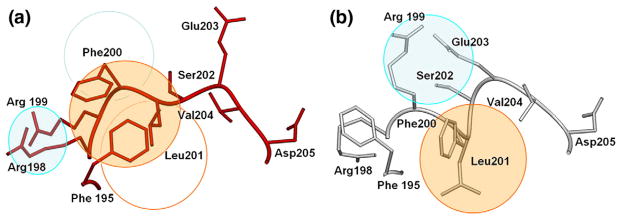Fig. 3.
SETOR23 diagrams depicting the rearrangement of hydrophobic clusters and secondary structure. The triple mutant GTB/C80S/C196S/C209S (a, red) has reordered a short amphipathic helix spanning residues 200–203 in the wild-type structure (b, white) by rearrangement of hydrophobic (orange circles) and hydrophilic (cyan circles) patches releasing the Glu203 helix dipole cap.

